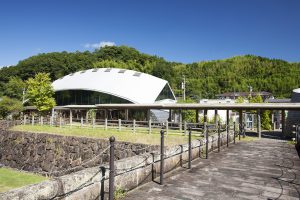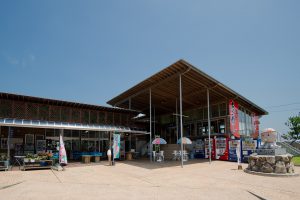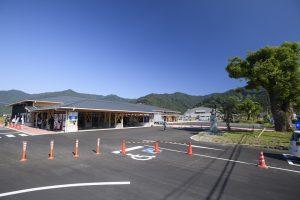Kunisaki Roadside Station
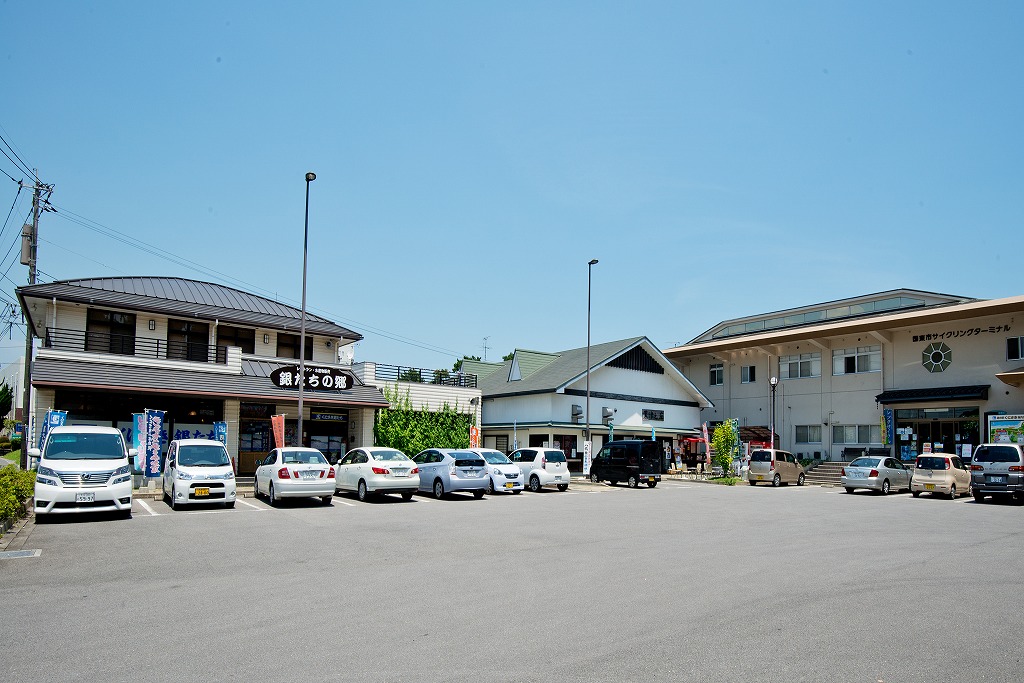
Index
Tantalize your taste buds with specialty swordfish dishes.
Cycling in the sea breeze
Kunisaki Peninsula is a place of syncretism between Shintoism and Buddhism, known as "Rokugoumansan. Michi no Eki Kunisaki, with its back to the Kurotsuzaki coast, consists of five facilities: the Kunisaki Cycling Terminal, a tourist information center; Yumesaki Jaya, a direct sales facility for agricultural products; Ginatachi no Sato, a restaurant; Kurotsunosho, a sales center for local products; and Belle c?te, a restaurant that opened in 2019. After eating and shopping, why not rent a bicycle at the cycling terminal and ride along the seaside cycling course?
Roadside Station Kunisaki Basic Information
| Location | 2662-1 Obara, Kunito-cho, Kunito-shi, Oita |
|---|---|
| Phone number | 0978-72-5168 (Tourist Information Center)<br>0978-73-2170 (Restaurant) |
| Business Hours | 8:30 a.m. to 5:00 p.m. Restaurant 9:00-17:00 (Food and beverage 11:00-15:00, ~16:00 on weekends and holidays) |
| Access | 40 minutes from Hayami IC on Higashi-Kyushu Expressway |
Map of Roadside Station Kunisaki
Roadside Station Kunisaki Gourmet Information
This is the best place to eat. Tachiju
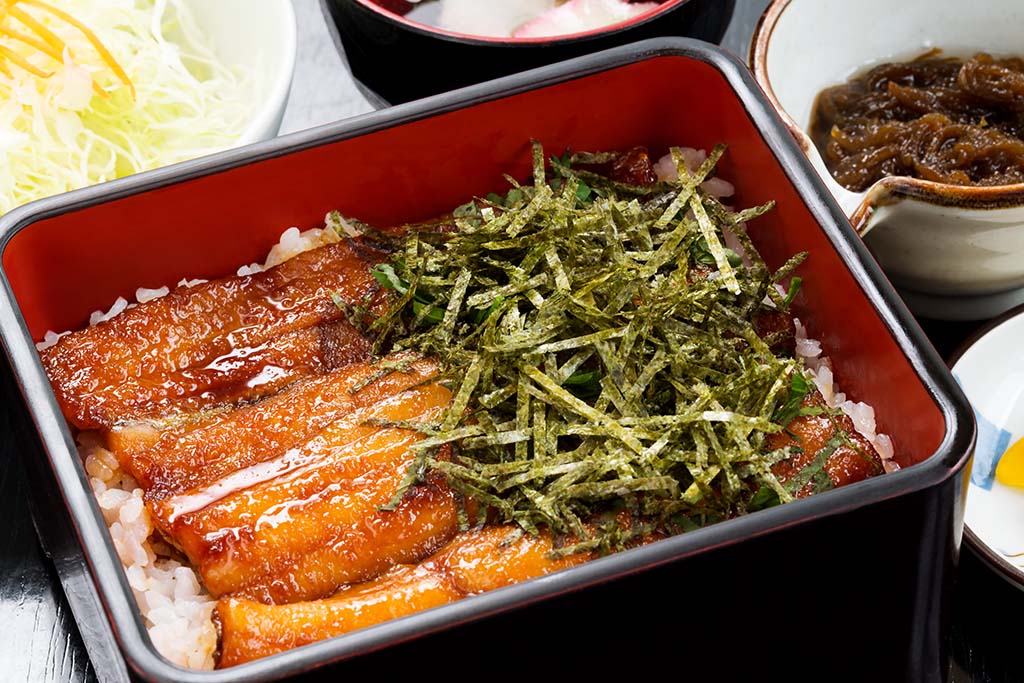
Oita Prefecture has the nation's largest catch of swordfish. Kunisaki Gin-tachi, a brand name fish from the Kunisaki Peninsula, is carefully caught one by one, and boasts of its straight body and the silvery glow that radiates from its entire body. The restaurant at Gin-tachi no Sato, which is directly managed by a fishing cooperative, offers a variety of menu items using Kunisaki Gin-tachi, the most popular of which is the "Tachi-jyu," a dish in which three slices of the fish are cut into three. The fish is cut into three pieces, broiled in a sweet and spicy sauce, and laid on a bed of freshly cooked rice. The soft texture of the fish and the refined flavor unique to white fish melt in the mouth. The accompanying soup is also delicious, with a broth made from the swordfish! The menu is so popular that it sells out quickly, so be sure to order early. 1,400 yen (tax included). The restaurant also sells souvenirs such as marine products.
Around Roadside Station Kunisaki
Ryokoji Temple
If you want to have fun in the area
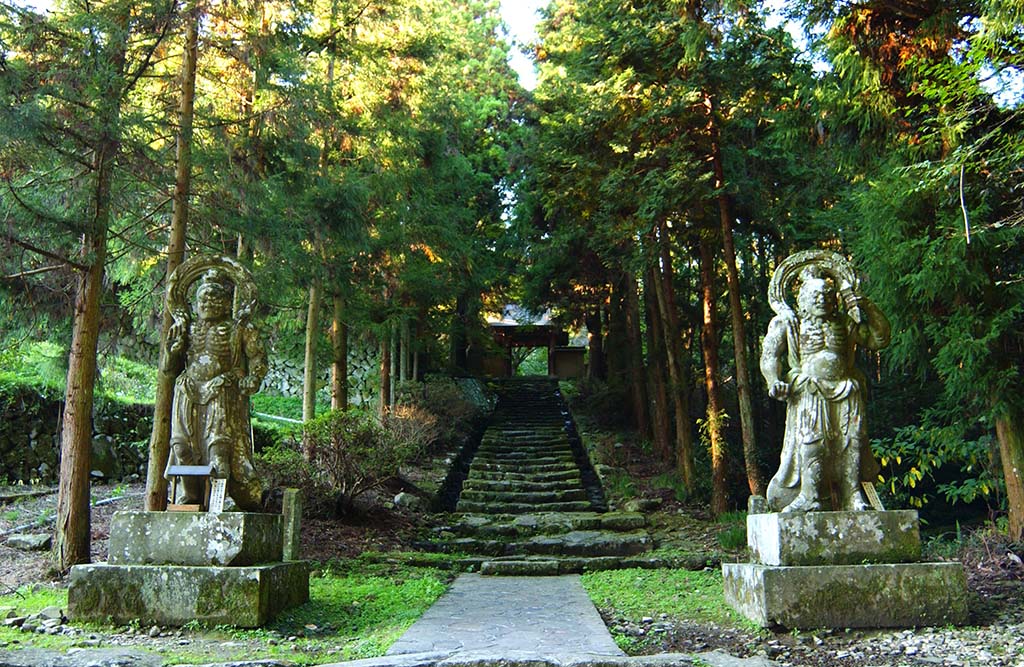
Located halfway up Ryoko Mountain, Nakayama Honji Temple is said to have been founded in 718 (Yoro 2) by Ninkon Bosatsu (Bodhisattva). It flourished as a center of mountain asceticism. In the Edo period (1603-1867), it became the highest prayer hall of the Kitsuki clan, and as the Soji-in Temple of Rokko-Mansan, it supervised the entire mountain. On either side of the stone steps leading to the temple gate stands one of the largest stone Kongorikishi (Nio) statues in the Kunisaki Peninsula (total height 245 cm, height 230 cm), said to have been made in the late Edo period. The temple grounds have been designated as one of the 100 best forest bathing forests in Japan. It is famous for its fresh greenery and autumn foliage. In the inner sanctuary, there is a place to pray for the birth of a child.
| Official Site | http://www.futagoji.jp/ |
|---|
Kaiun Road and Mikuji
If you want to have fun in the area
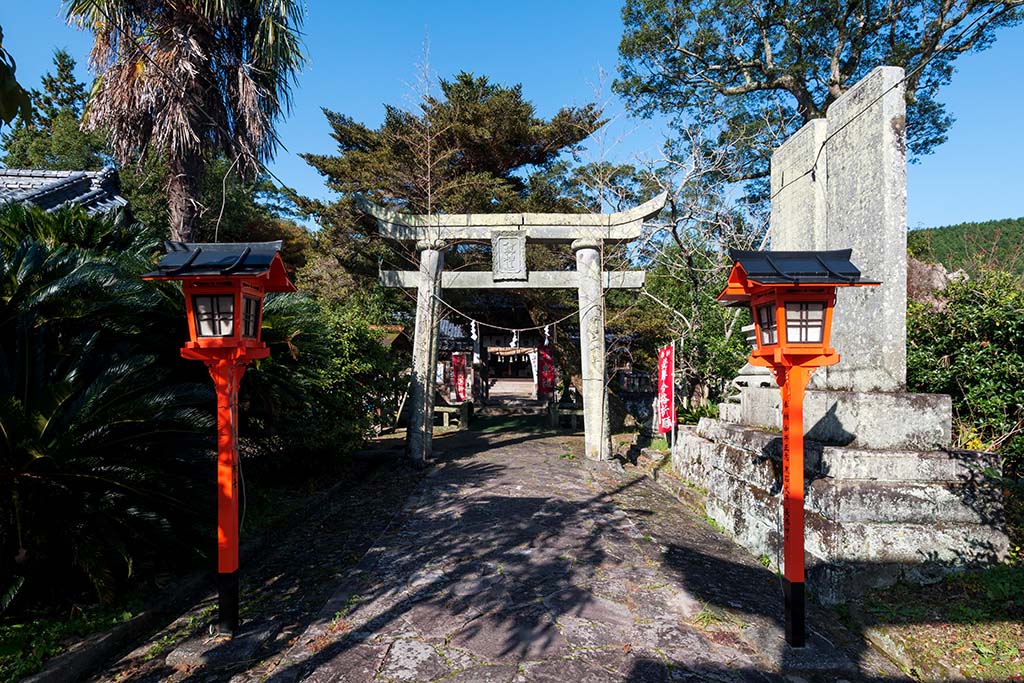
About 10 minutes north on National Route 213 from the roadside station, you will enter the Tomiku district, where you will find the "Kaiun Road. The 10-km stretch from "Maneki Neko Park" near Tomirai Port to Monjusenji Temple on Prefectural Road 652 is called the "Kaiun Road. 10 km is 10 x 1,000 m, or "Toosen (winning)," a pun. There are many lucky spots along the way, including Yasaka Shrine, also known as Tomirai Shrine, the local guardian deity. It is said that some visitors pray for winning the lottery. The "Kaiun no Undama Kara Shishi (lucky ball) lion statue" in the precincts of the shrine is believed to bring good luck to the male and the female.

